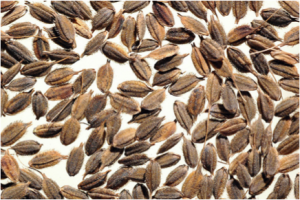By Hannes Dempewolf
We at the Global Crop Diversity Trust care about wildlings! No, not the people beyond The Wall, but the wild cousins of our domesticated crops. By collecting, conserving and using wild crop relatives, we hope to be able to adapt agriculture to climate change. This project is funded by the Government of Norway, in partnership with the Millennium Seed Bank at Kew in the UK, and many national and international research institutes around the world.
The first step of this project was to map and analyze the distribution patterns of hundreds of crop wild relatives. Next, we identified global priorities for collecting, and are now providing support to our national partners to collect these wild species and use them in pre-breeding efforts. An example of a crop we have already started pre-breeding is eggplant (aubergine). This crop, important in developing countries, has many wild relatives, which we are using to develop varieties that can better withstand abiotic stresses and variable environments.
More recently we have started a discussion with the crop science community on how best to share our data and information about these species, and genetic resources more generally. This discourse that was at the heart of what has now become the DivSeek Initiative, a Global Plant Council initiative that you can read more about in this GPC blog post by Gurdev Khush.
Why should you care?
Good question. I couldn’t possibly answer it better than Sandy Knapp, one of the Project’s recent reviewers, who speaks in the video below.
One of the great leaders in the field, Jack Harlan, also recognized their immense value: “When the crop you live by is threatened you will turn to any source of relief you can find. In most cases, it is the wild relatives that salvage the situation, and we can point very specifically to several examples in which genes from wild relatives stand between man and starvation or economic ruin.”

Wild rice, Oryza officinalis, is being used to adapt commercial rice cultivars to climate change. Photo credit: IRRI photos, used under Creative Commons License 2.0
Crop wild relatives have indeed been used for many decades to improve crops and their value is well recognized by breeders. This is increasingly true also for abiotic stress tolerances, particularly relevant if we care about adapting our agricultural systems to climate change. One such example is the use of a wild rice (Oryza officinalis) to change the flowering time of the rice cultivar Koshihikari (Oryza sativa) to avoid the hottest part of the day.
Share the care
Fostering the community of those who care about crop wild relatives is an important objective of the project. We make sure that all the germplasm collected by partners is accessible to the global community for research and breeding, within the framework of the International Treaty on Plant Genetic Resources for Food and Agriculture (the ‘Plant Treaty’). The project invests into building capacity into collecting: it’s not as simple a process as it may sound. The following shows the training in collection in Uganda:
We also put a heavy emphasis on technology transfer and the development of lasting partnerships in all of the pre-breeding projects we support.
The only way we can safeguard and reap the benefits of the genetic diversity of crop wild relatives over the long term is by supporting a vibrant, committed community. We hope you agree, and encourage you to get in touch via cropwildrelatives@croptrust.org.
To find out more about the Crop Trust and how you can take action to help conserve crop diversity for food security, please visit our webpage. For more information about the Crop Wild Relatives project, please visit www.cwrdiversity.org.







